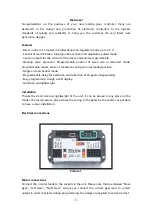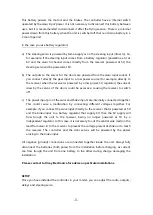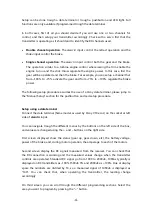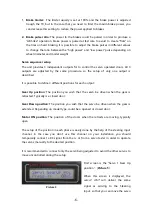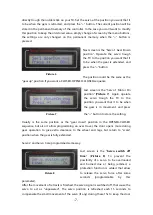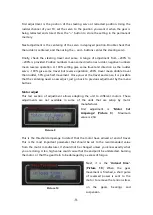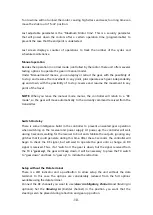
-9-
First adjustment is the position of the steering servo at retracted position. Using the
rudder channel of your TX, set the servo to the position you want it when the gear is
being retracted and stored. Press the “+” button to store the setting in the permanent
memory.
Next adjustment is the centering of the servo in deployed position. Double check that
the rudder is centered, and then using the + and – buttons center the steering servo.
Finally, check the steering travel and sense. A range of adjustment from –200% to
+200% is provided. Positive numbers mean same direction as rudder, negative numbers
mean reverse operation. A 100% setting give same travel and direction as the rudder
servo, -100% give same travel but reverse operation, 200% travel mean double travel
than rudder, 50% give half movement. Once you set the travel and sense, it is possible
that the centering need a new adjust, just go back to previous adjustment by the menu
buttons.
Motor adjust
This last section of adjustment allows adapting the unit to different motors. These
adjustments are not available in some of the units that are setup by motor
manufacturer.
First adjustment is “
Motor Cut
Amperage
” (
Picture 9
). Maximum
value is 2,5A.
This is the threshold amperage to detect that the motor have arrived at end of travel.
This is the most important parameter that should be set to the recommended value
from the motor manufacturer. It should not be changed unless you know exactly what
you are doing. A too high value could cause that the endpoint be undetected, burning
the motor, or that the gear train to be damaged by a excess of torque.
Next, it is the “
Unload time
”.
(
Picture 10
) When the gear
movement is finished, a short pulse
of reversed power is sent to the
motor to remove the tension stress
on the gears, bearings and
suspension.
Picture 9
Picture 10


